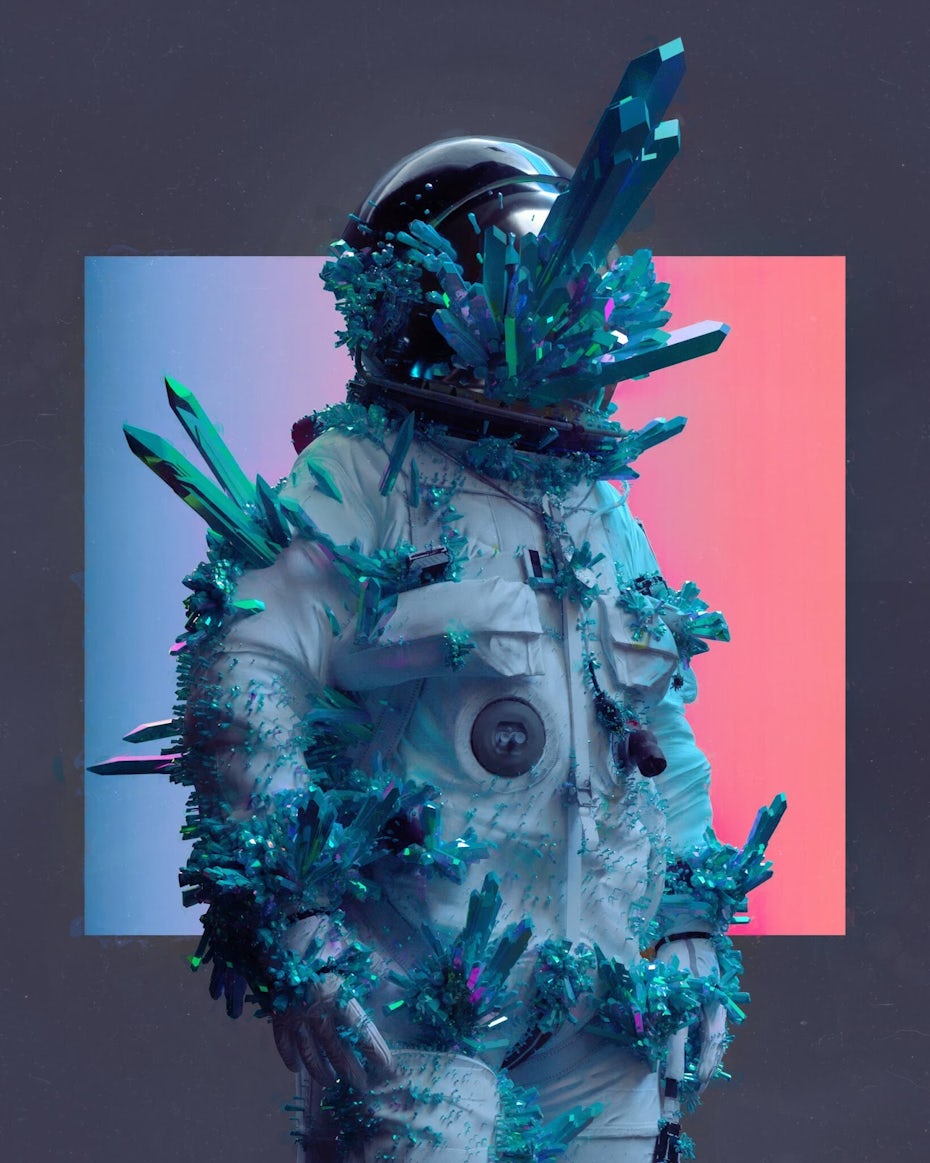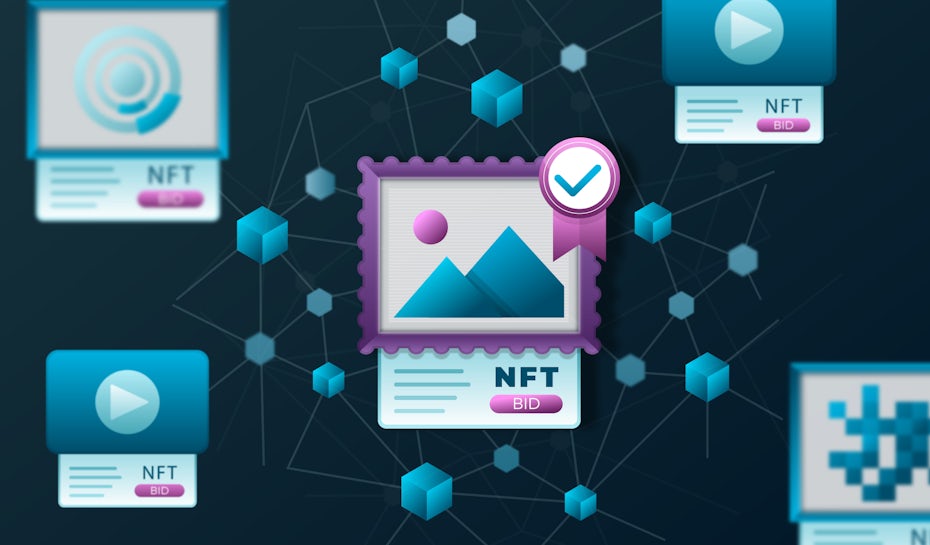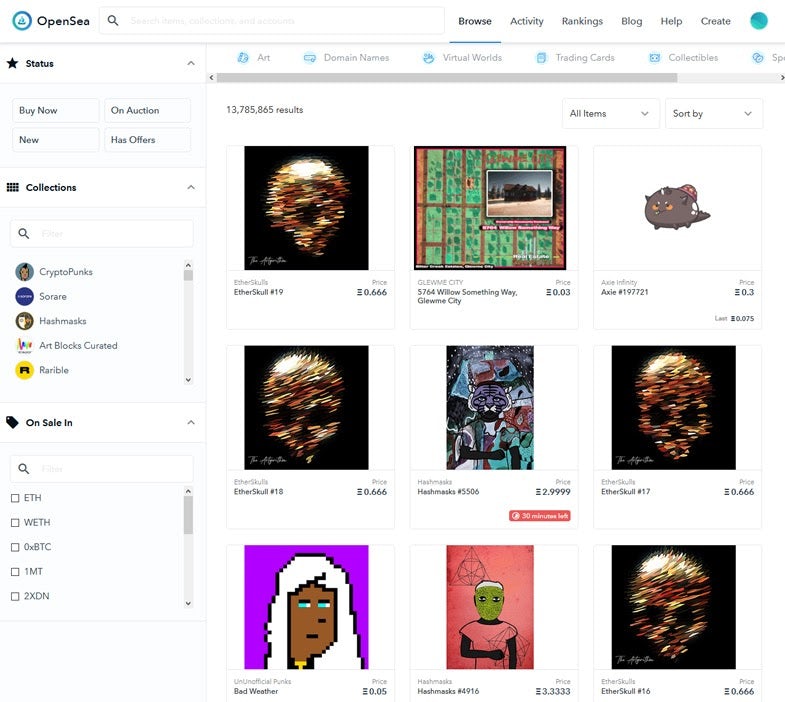I Am a Thai Graphic Designer Facebook
If you haven't yet heard of NFT's or NFT art, I suggest taking a look at your wifi connection. In the last 4-5 months, NFT talk has literally broken the internet. From platforms like TikTok and Twitter to CNN News, the trending topic has left millions wondering, what is it and how can it work for me?
Its recent rise in popularity has promised to revolutionize the creative industry. As a graphic designer and artist, I'm here to ask, "What's in it for me?" Let's begin with a definition.
What is NFT art?
—
An NFT is a digital asset that exists completely in the digital universe—you can't touch it, but you can own it. An NFT can be any type of digital file: an artwork, an article, music or even a meme such as "Disaster Girl", the original photo of which sold for $500k earlier this year.
NFT stands for 'Non Fungible Token', but what does that mean? Well, it helps to first understand what a 'Fungible Token' is. If we think of it in terms of money: a 100 dollar bill can be swapped for five 20 dollar bills and still hold the same value, which means a 100 dollar bill is a fungible token.

If this 100 dollar bill is signed by Banksy, it becomes a totally unique product. Its value is then much harder to determine, as it's no longer simply worth five 20 dollar bills. This means a Non Fungible Token cannot be swapped for any equivalent value. It also means that, like any investment, its value can increase or decrease in the future depending on the circumstances.
What we're particularly interested in is: how will this new, digital means of selling art affect creators and the creative industry?
What do NFTs mean for creators?
—
1. Ownership of digital art
Prior to the existence of Cryptocurrency, we never really got to own something that was completely digital. We passed around videos and motion graphics, repurposing and reposting them, but there wasn't this current opportunity to automatically assume complete, concrete ownership over a digital file or artwork. The rise of NFT's changes this, allowing creators the authority to rent digital artworks out, to sell them or display them how they wish.
In order to sell them, designers need to get some kind of 'legal' ownership of their work. So, after NFT art is created, it's 'minted' or tokenized on the cryptocurrency service, Blockchain. The Blockchain is a digital transaction system that records information in a way that makes it very difficult to hack or scam, which means it's extremely useful for tracking copyright ownership and maintaining records of creation. Theoretically, any digital masterpiece you create and mint will lead solely to you.

Ultimately, this process should allow digital artists to gain formal recognition for their work, similarly to how a painter like Gustav Klimt is credited with his infamous painting, The Kiss. The issue surrounding this very new concept is that although Blockchain does have contracts in place to support the legalities of minting and copyrighting cryptoart, none of these have yet been tried or tested in court.
Artists have already come forward with the news that they have had their work fraudulently minted and sold by scammers. But without relevant protection by the law or any preexisting legislation on this topic, it remains speculative as to what these artists will be able to do about this.
2. A novel way to generate income
NFT art is a totally new way of categorizing digital artworks that enables designers to monetize their work. It's supposed to be a quicker process and a more accessible way for designers to produce work and reap the rewards for their creativity. There's no chasing clients for payment, there's no preparing files for print and there's no waiting to hear feedback or changing and editing your work to suit a client's needs.
Royalties
Some NFT art comes with royalties to the artist, meaning every time the artwork is sold on, the artist can receive 8-10% of all future sales. This depends upon which platform the artist is using; Zora, for instance, is an NFT platform with the "Creative Share" option, meaning users can buy and trade artworks immediately.
NFTs can't stand alone
Another thing that's affecting the design industry hugely by the outbreak of NFTs is value. How do you value a physical artwork in comparison to a virtual work of art. Also the value of NFT's and CryptoArt is solely based on the value of Cryptocurrency. Because NFTs are sold on the basis of Ethereum, and that's translated into monetary value, for example an NFT sells for 2 Ethereum, which is translated to us as about $2,255 dollars. But if the value of Ethereum were to drop, then so does the value of the artwork: its value is continually dependant upon the cryptocoin.
3. A global reach
Previously, the exclusive, illustrious world of art collecting and selling has been something that's generally happened in physical spaces concerning physical artworks. Designers and artists made money from IRL events like exhibitions and markets until recent world events meant that many of these avenues were stopped. The rise of NFT trading means that art collecting has been able to move online, opening it up to many artists, on a global scale, who may not have previously had the chance to sell their work to buyers.
Similarly, for many graphic designers it can be really difficult to hold down a steady means of income without doing odd jobs or unrelated work. Stability is a slow bloomer and can be found in loyal clients or through a consistent, timely turnover of projects. But, if you're not already well-established it can be tricky to find your feet in this competitive industry. So, the immediacy in which an NFT can generate income could, theoretically, open a tidal wave of opportunity for a huge number of creatives, especially those who are less privileged.
Like social media, NFT platforms grant designers immediate access to global audiences. And, often, having a pre-existing online following will help artists gain exposure in the NFT market. The tricky part for designers is working out how to convert their audiences into buyers. Like any other brand, you must find your audience and learn how to establish an emotional connection with them. This means that you'll need to investigate brand strategies to find what works for you. If you don't have much of an online presence already, also take a deeper look at your approach to marketing.
Inclusivity versus exclusivity
The art sector of NFTs professes to create an inclusive, protecting environment for digital artists to make money. Anyone with access to a computer can make an NFT and have the potential for it to blow up: whether your niche is realistic, 3D motion graphics or blocky pixels like the Nyan Cat video (which sold for $600,00, might I add). This has the potential to be life-changing for millions of creatives worldwide.
The hypnotizing Nyan Cat
Yet, one point to be aware of is how expensive the minting fee is. Designers must outbid each other to get their artwork 'minted' on Blockchain. Prices fluctuate, depending on time and network, but it ranges from anywhere between $80 to $1000. This fee doesn't guarantee sales for designers, but without paying it they cannot list their artwork on the market.
4. A hefty ecological footprint
One controversy surrounding the world of NFT artworks is the impact it's having on the environment. French artist Joanie Lemercier recently made news after his NFT sold out in 10 seconds, making thousands of dollars. Pretty incredible, right? Well, what he also could not foresee is exactly how much energy this transaction would consume: the equivalent of how much his studio uses over a full 2 year period, which is 8.7 megawatt-hours of energy.
His seller then resold the piece, which used the same amount of energy and horrified the artist who had looked to sell work online as an eco-friendly alternative to transporting physical work around the world's museums. Lemercier went on to release a statement documenting the lack of transparency he faced from cryptoart platforms when investigating their energy consumption.
Joanie Lemercier's NFT that consumed 8.7 megawatt-hours of energy.
Unsurprisingly, the fact that NFT artworks are so resource-heavy is hugely alarming for many designers. But this issue isn't exclusive to trading cryptoart; it's part of a bigger issue involving the digital mechanism, "proof of work". Since its emergence in the early 90s, proof of work has evolved to be used largely in cryptocurrency mining to create and mint tokens like bitcoin and ethereum. Highly powered computers essentially compete to get the most bitcoin and need to source a huge amount of electricity to do so.
Developments of greener alternatives are ongoing, but while bitcoin continues to dominate cryptocurrencies, this process that is so harmful to the environment is proving unavoidable for any designers wishing to sell their art as NFTs.
Does the NFT art industry have longevity?
—
Well, the answer is we're not too sure! April saw NFT prices shudder to a slump of 70%, yet with so much potential it seems unlikely that NFT art will run out of steam anytime soon.

I personally don't think this is a fad, I believe we have been heading into a majority digital age for the last decade and this is just the next thing to become comfortable with. As a graphic designer myself, most of my work is made and prepared for some sort of print, however all my work is created digitally, so it feels a bit of a wasted opportunity to not create an NFT. I think this will be the same for many designers. The NFT world has too much potential to not see itself through.
How to actually create an NFT
—
The first thing designers need to do on their way to setting up an NFT to sell is create a "Crypto Wallet". This is going to store the Ethereum, which you will need to pay the minting fees. Then you will need to connect your Crypto Wallet to one of the NFT marketplaces.
NFT marketplaces allow designers and artists to upload their digital artwork and list it for sale online as an NFT. You can imagine them to be like Ebay or Etsy—except they're purely for NFTs! The most popular ones include: Rarible, OpenSea, Mintable, KnownOrigin and SuperRare.
One thing to keep in mind when uploading your artworks onto these is how many you're going to provide. You can choose to put it on as 1 of 1, meaning there will only be one artwork to exist and be sold, or you could decide to upload a collection of the artwork with multiple copies. This is quite a huge decision to make because—like traditional art forms—the number of original editions and how rare a piece is will directly impact its value.
NFT art: to sum up
—
The selling of crypto or NFT art holds the potential to transform the entire creative industry; its emergence is only the beginning of something that'll feel mundane to future generations. Yet, the early world of NFT art fails to stand up as a reliable, inclusive environment to sell digital art upon. Our eyes are peeled to see what happens next—and we hope the tide turns in favor of designers.
Need something awesome designed?
Our talented designers can create just about anything.
I Am a Thai Graphic Designer Facebook
Source: https://99designs.com/blog/web-digital/nft-art/
0 Response to "I Am a Thai Graphic Designer Facebook"
Post a Comment